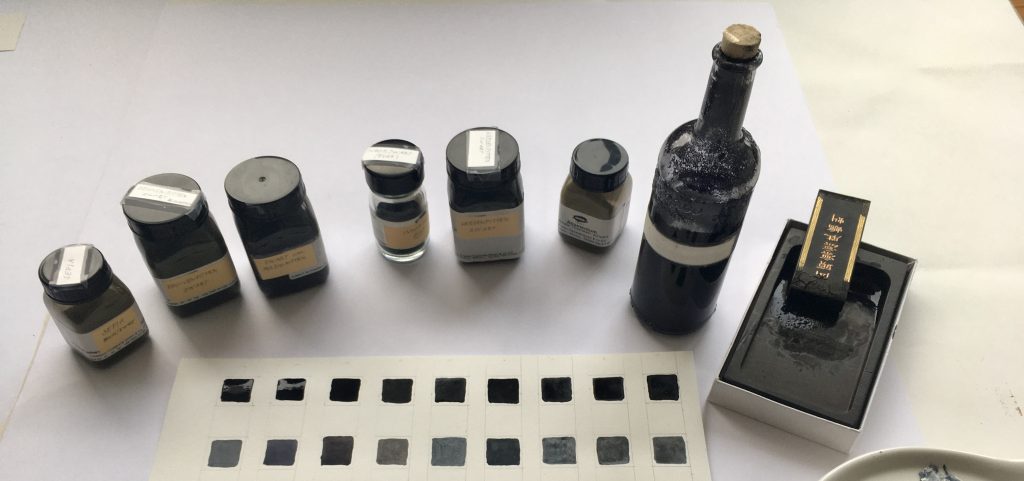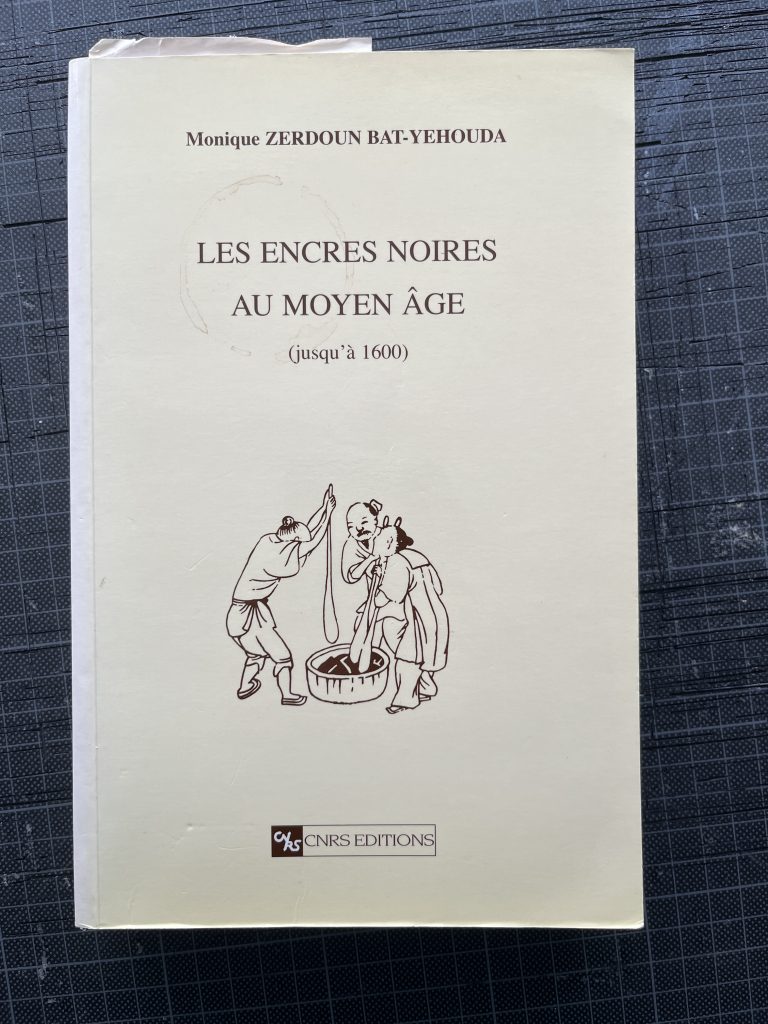Black in medieval manuscripts

In his book: ” The Materials And Techniques of Medieval Painting” writes Daniel V. Thompson: “The most important black in medieval times was ink”.
https://www.amazon.nl/Materials-Techniques-Medieval-Painting/dp/0486203271
Ink was, of course, most important for writing and occasionally for painting. Ink was also important for setting up a drawing, a composition, especially in panel painting.
As for ink, there were two possibilities:
- Ink made from a solution of carbon in water mixed with gum arabic.
- Gallnut ink, a solution of tannin from gallnuts mixed with ferrous sulphate.
After writing with this ink, the writing is initially very light but oxidation soon turns it deep black. The oxidation process is also called: ‘burning in’ (Latin: incaustum). French ‘encre’ and Italian: ‘inchiostro’ come from the same root. The first recipe for iron gallnut ink comes from the XIIth century (Theophilus). From the XIIIth century onwards, we come across many recipes in recipe books. In the 14th century, recipes for iron gallnut ink dominate.

Both inks are very usable and durable, however, they both have a drawback.
Carbon ink stays a bit on the parchment, making adhesion less good. By ‘sanding’ the sheets, the writing can ‘wear out’.
Gallnut ink adheres much better but can eventually eat through the vellum or paper, (ink gouging).
It also happened that both inks were mixed.
A very thorough study on the history of ink in general is the book:
Les Encres Noires au Moyen-Âge by Monique Zerdoun Bat-Yehouda published by: CNRS Editions. What a wonderful book that is, a very comprehensive study of all black inks used up to 1600 in Western Europe, the Middle East and China. Want to pay attention to that later. For those who can speak French, it is now also available to read online.
https://www.persee.fr/doc/dirht_0073-8212_1983_mon_28_1
Or buy them yourself:
https://www.cnrseditions.fr/catalogue/histoire/les-encres-noires-au-moyen-age-jusqua-1600/
Besides ink, several other blacks were used in manuscripts such as:
Ivory black, Lamp black, Vine black, Cherry seed black, Grape seed black, Atramentum, Peach seed black and Sepia.
In this post, I would like to describe some blacks I own myself and show some samples.


Video: https://youtu.be/p_y3Fc_LntE
In this video, I explain how to prepare the black pigments. To do this, I use a binder according to medieval recipe:
10 parts dissolved gum arabic
8 parts beaten egg white
2 parts honey water
3 drops of clove oil


